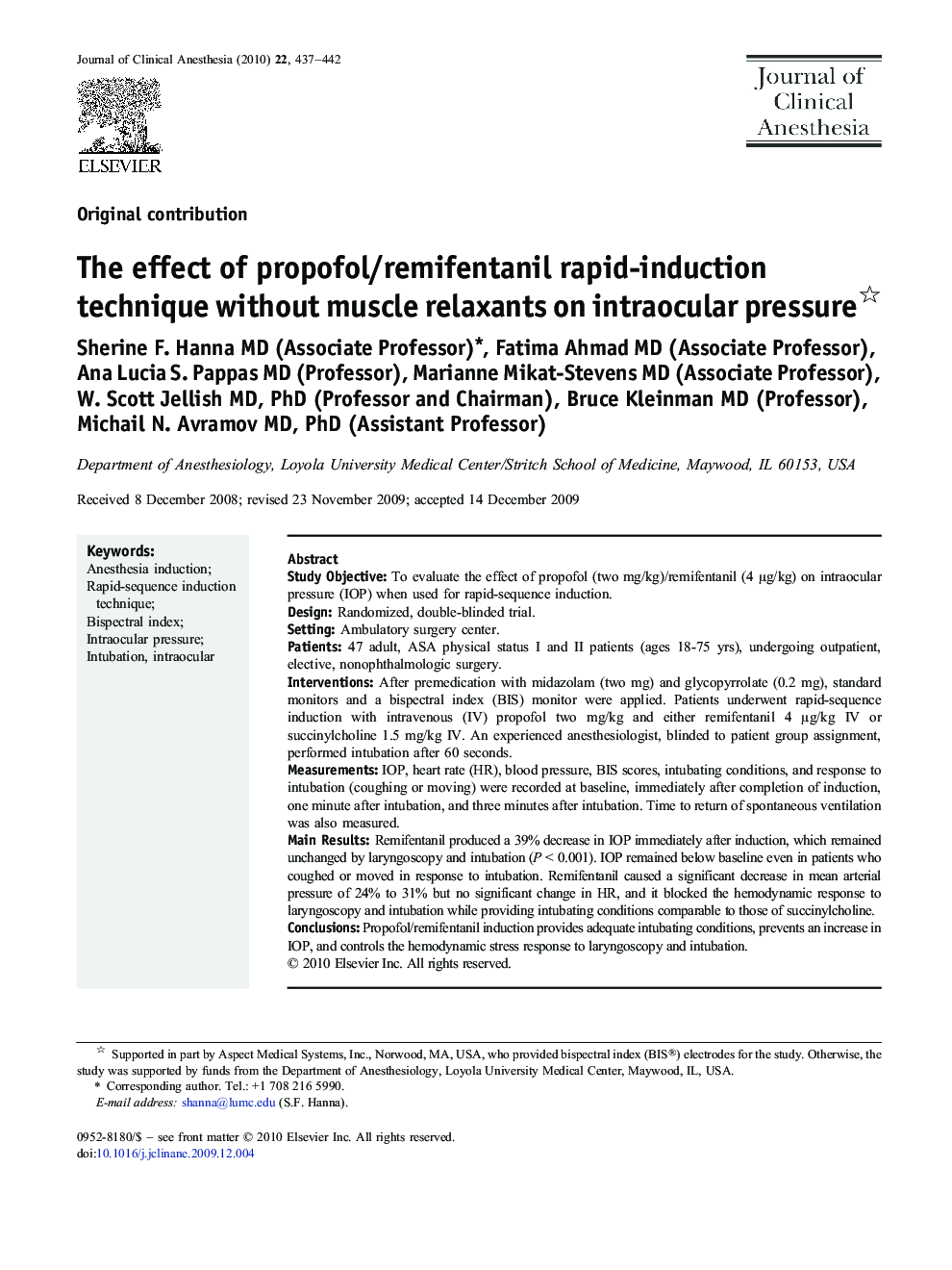| Article ID | Journal | Published Year | Pages | File Type |
|---|---|---|---|---|
| 2763001 | Journal of Clinical Anesthesia | 2010 | 6 Pages |
Study ObjectiveTo evaluate the effect of propofol (two mg/kg)/remifentanil (4 μg/kg) on intraocular pressure (IOP) when used for rapid-sequence induction.DesignRandomized, double-blinded trial.SettingAmbulatory surgery center.Patients47 adult, ASA physical status I and II patients (ages 18-75 yrs), undergoing outpatient, elective, nonophthalmologic surgery.InterventionsAfter premedication with midazolam (two mg) and glycopyrrolate (0.2 mg), standard monitors and a bispectral index (BIS) monitor were applied. Patients underwent rapid-sequence induction with intravenous (IV) propofol two mg/kg and either remifentanil 4 μg/kg IV or succinylcholine 1.5 mg/kg IV. An experienced anesthesiologist, blinded to patient group assignment, performed intubation after 60 seconds.MeasurementsIOP, heart rate (HR), blood pressure, BIS scores, intubating conditions, and response to intubation (coughing or moving) were recorded at baseline, immediately after completion of induction, one minute after intubation, and three minutes after intubation. Time to return of spontaneous ventilation was also measured.Main ResultsRemifentanil produced a 39% decrease in IOP immediately after induction, which remained unchanged by laryngoscopy and intubation (P < 0.001). IOP remained below baseline even in patients who coughed or moved in response to intubation. Remifentanil caused a significant decrease in mean arterial pressure of 24% to 31% but no significant change in HR, and it blocked the hemodynamic response to laryngoscopy and intubation while providing intubating conditions comparable to those of succinylcholine.ConclusionsPropofol/remifentanil induction provides adequate intubating conditions, prevents an increase in IOP, and controls the hemodynamic stress response to laryngoscopy and intubation.
